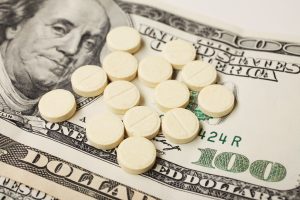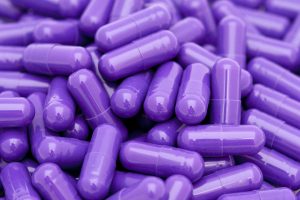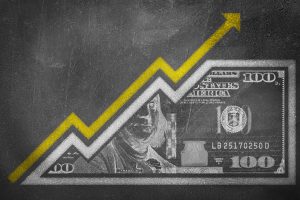Are doctors influenced by Big Pharma money?
July 20, 2018 — San Diego, CA. New studies show doctors prescribe more brand-name drugs after eating meals comped by Big Pharma
It’s a question people have been asking for decades: How much does Big Pharma influence a doctor’s prescribing habits? In other words, do doctors decide which drugs to prescribe based on their merits or their makers’ wallets?
Pharmaceutical companies pay doctors in the form of meals, speaking gigs, literature, travel and more, and have been doing so for years. Until recently, however, it remained unclear just how much Big Pharma was spending and which doctors were accepting its contributions.
Then, in an effort to pull back the curtain on Big Pharma’s influence, the federal government rolled out a searchable database of America’s physicians, listing the type and amount of contributions they have received from pharmaceutical companies. The database, which went live in 2014, was the first of its kind and gave the American public a glimpse into how their local doctors may be influenced by Big Pharma.
What the database couldn’t do was determine if the gifts actually influenced doctors’ prescribing habits. That’s when science stepped in.
Two studies published this month by JAMA Internal Medicine showed doctors prescribed brand-name drugs over their cheaper generic counterparts after receiving incentives from their Big Pharma manufacturers.
$20 meals equal more brand-name scripts for popular drugs
A study published online by the journal on June 20 found doctors who received meals costing less than $20 were still more likely to prescribe the brand-name versions of four popular drugs compared to doctors who did not.
The cross-sectional study looked at 2013 data from the federal government’s database, as well as the prescribing data for individual physicians from Medicare Part D.
Researchers focused on the most-prescribed brand-name drugs from four popular drug classes, including AztraZeneca’s Crestor, a cholesterol-lowering statin; Allergan’s Bystolic, a blood-pressure-lowering beta blocker; Daiichi Sankyo’s Benicar, a blood-pressure-lowering ARB; and Pfizer’s Pristiq, an SNRI used to treat depression.
All four drugs have generic equivalents available.
The study included 156,000 physicians who wrote more than 20 prescriptions for at least one of the above-mentioned pharmaceuticals in 2013. According to the study, physicians who received a single meal promoting one of the four drugs were more likely to prescribe the name-brand version over the generic version.
The meals, which accounted for 95% of all industry contributions, cost the pharmaceutical companies merely $12 to $18 per person on average.
In the case of Crestor, a single meal translated into an 18% increase in brand-name prescribing rates; Bystolic saw a 70% increase in prescribing rates after one meal; Benicar saw a 52% increase; and Pristiq saw a whopping 118% increase in prescribing rates after one meal.
Researchers also noted a dose-depended relationship between industry-sponsored meals and brand-name prescribing habits: the more costly the meal or the more meals a physician accepted, the more likely he or she was to prescribe the promoted drug.
“If … meals change physicians’ prescribing practices as a result of promotional influence, either by encouraging future use or rewarding an ongoing preference for the promoted drug, this would be cause for concern,” wrote the study authors. “Our findings support the importance of ongoing transparency efforts in the United States and Europe.”
Study: more brand names prescribed for every $1k received
A Harvard University study, published in JAMA Internal Medicine’s June edition, looked at the prescribing habits of physicians in the state of Massachusetts. The researchers focused on one specific class of drugs – statins – which are commonly prescribed to treat high cholesterol, a condition that plagues about 33.5% of Americans, according to the Centers for Disease Control.
The Harvard study analyzed the habits of nearly 2,500 Massachusetts physicians who wrote prescriptions for statins paid for under the Medicare Part D drug benefit in 2011. According to the study, about 37% of these physicians received payments from the pharmaceutical industry and for every $1,000 of industry money received, physicians’ prescribing rate of brand-name statins increased by about 0.1%.
While a 0.1% increase may not sound like much, it’s important to remember that brand-name statins can cost anywhere from two to four times as much as their generic counterparts, and cost is an important factor in patient health outcomes; patients are less likely to keep taking drugs that are more expensive, a ProPublica review of the study points out.
Researchers were quick to note that their study does not necessarily prove a causal relationship between industry money and brand-name prescribing.
“I think the causal relationship is really difficult to determine because there’s so many other factors that impact the physician’s prescribing behavior,” lead study author Dr. James S. Yeh told ProPublica.
The idea that pharmaceutical companies could be targeting doctors who already prescribe a lot of brand-name medicines is one of those “other factors.”
Still, study authors concluded industry payments to doctors were indeed associated with higher rates of prescribing brand-name statins.
“As the United States seeks to rein in the costs of prescription drugs and make them less expensive for patients, our findings are concerning,” wrote the study authors.
Studies come in wake of historical Big Pharma settlements
The two studies were published just years after some of the biggest settlements ever paid by pharmaceutical companies as a result of criminal and civil investigations. Three of the largest settlements included allegations of illegal kickbacks to doctors.
Pfizer Inc. broke the settlement payout barrier in 2009 when it paid $2.3 billion to the federal government over allegations it promoted four of its drugs off-label and provided kickbacks to doctors. Pfizer’s settlement remains the second-largest settlement ever paid by a pharmaceutical company in the United States.
Three years later in 2012, GlaxoSmithKline smashed Pfizer’s record by paying $3 billion to settle allegations it promoted drugs off-label, provided kickbacks to doctors and made false and misleading statements about some of its medications. It remains the largest settlement ever reached between a pharmaceutical company and the federal government.
In 2013, Johnson & Johnson would accept the bronze for third-biggest settlement, paying $2.2 billion over allegations of off-label promotion and illegal kickbacks.
These settlements, which are a drop in the bucket for Big Pharma companies, highlight just how far these companies are willing to go in the name of profit.
And as these recent studies suggest, their money does buy influence.
Note: The information provided in this article is based on reports from publicly available sources, including news outlets, police reports, and eyewitness accounts. National Injury Help has not independently verified all details of the reported incident. If you find any inaccurate or outdated information, please contact us, and we will review and update the content as appropriate. The photo used in this post is for illustrative purposes only and does not depict the actual scene of the incident.
Disclaimer: The content of this article is intended for informational purposes only and does not constitute legal advice or establish an attorney-client relationship with National Injury Help. For legal assistance specific to your case, we encourage you to contact a qualified attorney.
Free Case Evaluation
Contact Us today for a FREE, Immediate Case Evaluation
Contact Us today for a FREE, Immediate Case Evaluation
Categories
Recent post
- Tucson, AZ – Injury-Causing Crash at Broadway St and Kolb Blvd
- Tucson, AZ – Crash With Injuries at Wetmore Rd & Flowing Wells Rd
- Phoenix, AZ – Chain-Reaction Crash on Cave Creek Rd
- The One-Bite Myth in California: Why Dog Owners Can’t Claim ‘They Didn’t Know’
- Tolleson, AZ – Accidente con heridos entre bicicleta y auto en 99th Ave






